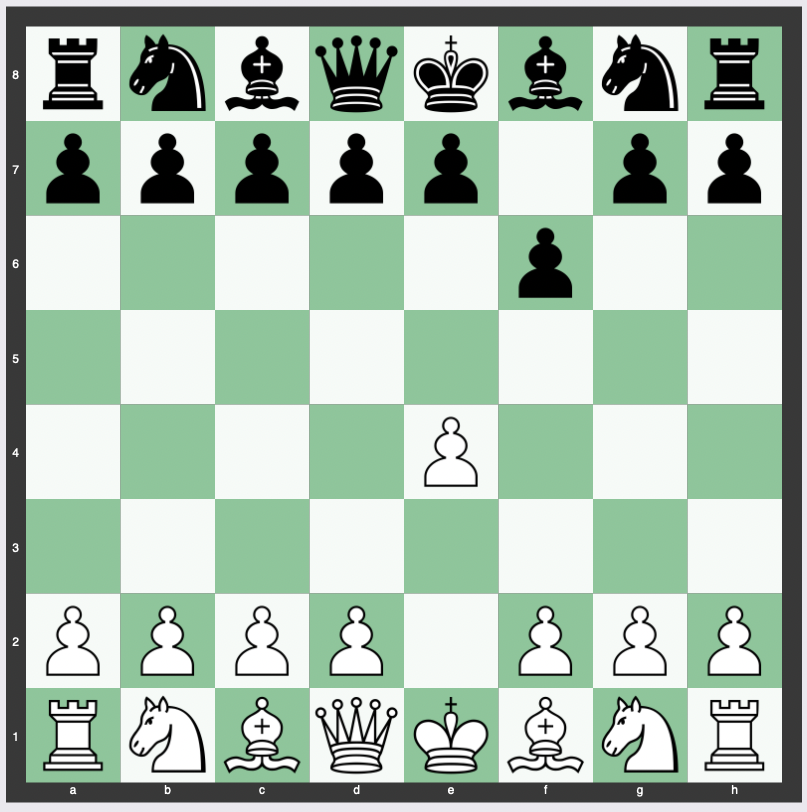The Barnes Defense is a rather unconventional and often controversial chess opening that begins with 1. e4 f6.
Named after Thomas Wilson Barnes, this particular defense has been seen in some notable games, including an 1858 victory over the great Paul Morphy.
While it has its proponents, the Barnes Defense is typically viewed as suboptimal due to the weaknesses it creates in Black’s position.
Below we will explore various aspects of this intriguing chess opening.
Move Order of the Barnes Defense
- e4 f6

This opening begins with White’s central pawn advancing to e4 and Black responding by moving the pawn to f6.
This move may appear to be nonsensical to some, as it takes away the natural square for the knight and weakens Black’s kingside.
It’s evaluated as around +1.70, favoring white.
Theory, Strategy, and Purpose of the Barnes Defense
The Barnes Defense is not part of mainstream chess theory.
It tends to take opponents by surprise, leading them into unfamiliar territory.
Its primary purpose is psychological, hoping to confuse or unsettle the opponent.
However, from a purely strategic standpoint, 1…f6 is considered to be inferior, weakening Black’s kingside and limiting natural piece development.
Variations of the Barnes Defense
Since the Barnes Defense is unconventional, there are no well-established mainline variations.
However, depending on White’s response, the game can transpose into other openings or lead to a unique and unexplored position.
History of the Barnes Defense
The Barnes Defense is named after Thomas Wilson Barnes, a British chess player.
He famously used this defense to defeat Paul Morphy in 1858.
Despite this historical success, the Barnes Defense has never gained widespread acceptance in chess circles.
Imagine The Unimaginable || Morphy vs Barnes (1858)
Is the Barnes Defense Good for Beginners or Intermediates?
The Barnes Defense is not recommended for beginners or intermediate players.
It does not adhere to traditional chess principles, such as controlling the center and developing pieces harmoniously.
Playing this opening may lead to bad habits and hinder progress in understanding fundamental chess concepts.
How Often Is the Barnes Defense Played at the Grandmaster Level?
The Barnes Defense is rarely played at the Grandmaster level.
Its inferior nature and the risk involved make it an unlikely choice for top-level players who prefer solid and well-established openings.
However, it may still occasionally be employed as a surprise weapon in less critical situations.
This is typically done to avoid established theory.
Conclusion
The Barnes Defense, starting with 1. e4 f6, is a unique and unconventional opening that has captured the curiosity of many chess enthusiasts.
Its history includes a notable victory by Thomas Wilson Barnes over Paul Morphy, but this does not change the general perception of the move as being inferior.
With its clear weaknesses and lack of alignment with traditional chess principles, the Barnes Defense is rarely seen at the top levels of play and is not recommended for those looking to improve their chess skills.
Nonetheless, it remains a fascinating part of chess lore, representing a bold and unorthodox approach to the game.


